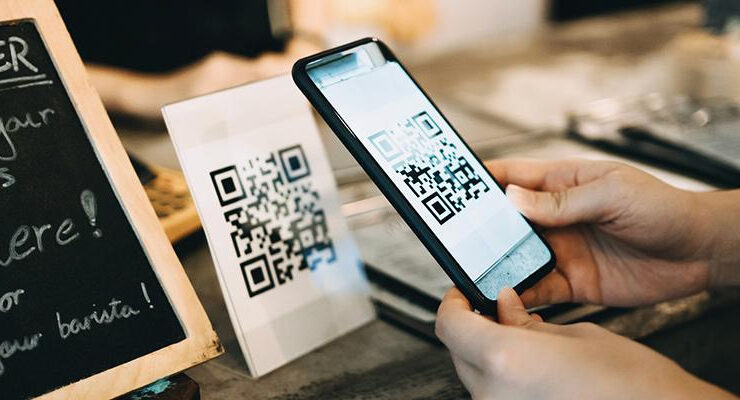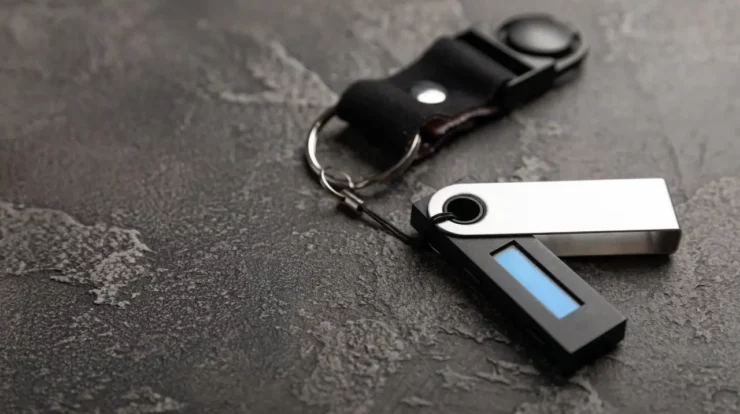
Nowadays, businesses are constantly looking for new ways to get customers more involved, make processes easier, and improve their marketing. QR codes are a powerful tool that has become very famous. Including QR codes in your business strategy can significantly enhance your ability to engage with customers, boost productivity, and uncover new prospects. We will also discuss common QR code scams and give you advice on how to protect your business. Alright, let’s start!
QR codes have become a versatile and useful way to connect the real and digital worlds in the age of smartphones and instant connection. Matrix bar codes, known as QR codes, or Quick Response Codes, are scanned by smartphones and other devices that have QR code readers. They can store different kinds of data, like text, contact information, URLs, and even video material. Because they are so flexible and easy to use, they are very useful for businesses of all kinds.
What are QR Codes?
QR codes are flat barcodes made up of black modules on a white background. Denso Wave, a Toyota company, introduced the first QR codes in 1994 to track cars during their manufacturing process. Since then, QR codes have developed into a versatile tool used for marketing, information sharing, and transactional reasons in various industries. ExpressVPN’s study of QR codes indicated that their use has grown by 26% in the past two years. This data shows how much people like this technology.
Benefits of QR Codes
Enhancing Customer Experience
Using QR codes can make the whole customer experience much better. You can give customers quick access to more information, engaging content, or special deals by putting QR codes on your product packaging, signs, or promotional materials. One example is a restaurant menu with a QR code that, when scanned, takes customers to a movie showing off their chef’s cooking skills or gives them a discount for their next visit.
Marketing and Promotions
Businesses can connect customers and increase sales by using QR codes as a powerful marketing tool. By adding QR codes to landing pages or advertising efforts, you can record how people interact with them and get useful information. A clothes store, for example, can make QR codes that take customers to a tailored webpage with suggested outfits. This way, customers can buy right away, and the store can learn more about what consumers like.
Contactless Payments
The COVID-19 pandemic has sped up the acceptance of contactless payment methods, and QR codes are essential in enabling these payments. Businesses can give customers a safe and practical payment choice by integrating QR code-based payment systems. QR codes can make it easier to check out, which can improve the shopping experience overall, no matter if you’re in a small coffee shop or a big store chain.
Tracking and Analytics
QR codes provide businesses useful information about how customers act and how well their campaigns are doing. Changeable QR codes, which can be modified even after printing, allow you to keep track of scan rates, location data, and device types. Businesses can use this information to improve their marketing strategies, personalize their products, and plan their next campaigns based on it.
Increasing Efficiency
Using QR codes can make many business tasks easier, which can boost output and efficiency. For instance, instead of typing in contact information by hand, scanning a QR code on a business card can add the information right away to a smartphone‘s address book. Similar to this, QR codes can make tracking and getting goods easier in inventory management, which can cut down on mistakes and save time.
QR Code Scams
Knowing about possible scams is essential, even though QR codes have many benefits. Criminals can use QR codes to trick people who aren’t paying attention and get access to their personal information or devices. Check out these popular QR code scams:
Malicious Code Injection: Scammers may make QR codes that, when scanned, take users to websites or apps that are intended to infect their devices with malware. This malware can steal private data, like login passwords or banking information, and do a lot of damage with it.
Phishing Attacks: QR codes that mimic genuine websites may lead users to fraudulent websites. By pretending to be trustworthy, these websites try to coerce users into disclosing personal information like passwords or credit card numbers.
Scammers can create QR codes that prompt users to make payments for fraudulent services or accounts. Users who don’t know what’s going on and read these codes might send money to scammers without realizing it, losing money.
Hidden URLs: QR codes can hide where a link really leads, which makes it difficult to spot possible threats. Con artists could use this to redirect users to seemingly safe but dangerous websites.
Scammers can put their own QR codes on the boxes of real products to trick people into buying them. These fake codes could direct people to harmful or counterfeit products, which would negatively impact businesses’ reputations.
Protecting Your Business
Implementing best practices is essential to protecting your business and customers from QR code scams.
Teach your customers and employees: Make your employees and customers more aware of QR code scams. Teach people how to spot sketchy QR codes and stress how important it is to be careful when scanning them.
Check the source: Simply read QR codes that come from reliable sources. Codes obtained from unknown sources or found in public places should be treated with caution.
Before scanning a QR code, look for any signs of tampering or modification. Look for letters or pixels that don’t look right. This could be a sign of a fake code.
Use Apps to Scan QR Codes: Only use QR code scanning apps that come from reliable sources. Many times, these apps come with built-in safety features that can spot and tell you about scams.
Stay Up to Date: To get the most recent security changes and improvements, make sure you regularly update your scanning app and your smartphone’s running system.
Best Practices
Consider the following best practices to get the most out of QR codes for your business while making sure users have a good time:
Placement and Accessibility: Put QR codes in places that people can see and get to. Make sure they are big enough to be scanned quickly and don’t get in the way of important information.
Clarity and a Call to Action: Make it clear what users can anticipate from scanning the QR code. Include an important call to action to get people to take it.
Make sure that the landing pages or material that can be reached through QR codes are mobile-friendly and optimized so that users can have a smooth experience on all of their devices.
Testing and Analytics: To ensure compatibility, read QR codes on various devices. Track how people engage with your QR code ads and see how well they work with analytics tools.
Designing a QR Code: Make QR codes that look good and fit with your brand’s style. To make them more captivating to look at, you could add your brand or use unique colors.
Conclusion
Businesses can improve customer experience, streamline processes, and increase marketing efforts with the help of QR codes, which are a versatile and effective tool. You can increase interaction, boost productivity, and keep track of important data by integrating QR codes into your business plan. To protect your business and customers, it’s important to stay on the lookout for QR code scams and implement best practices. Risks with QR codes can be reduced by learning about common scams, making sure QR codes come from a trustworthy source, and using safe scanning apps.
Keep up with the latest security measures, check QR codes for signs of tampering, and make sure your customers and employees are aware of the risks. These tips will help you use QR codes effectively while keeping your business and customers safe.


